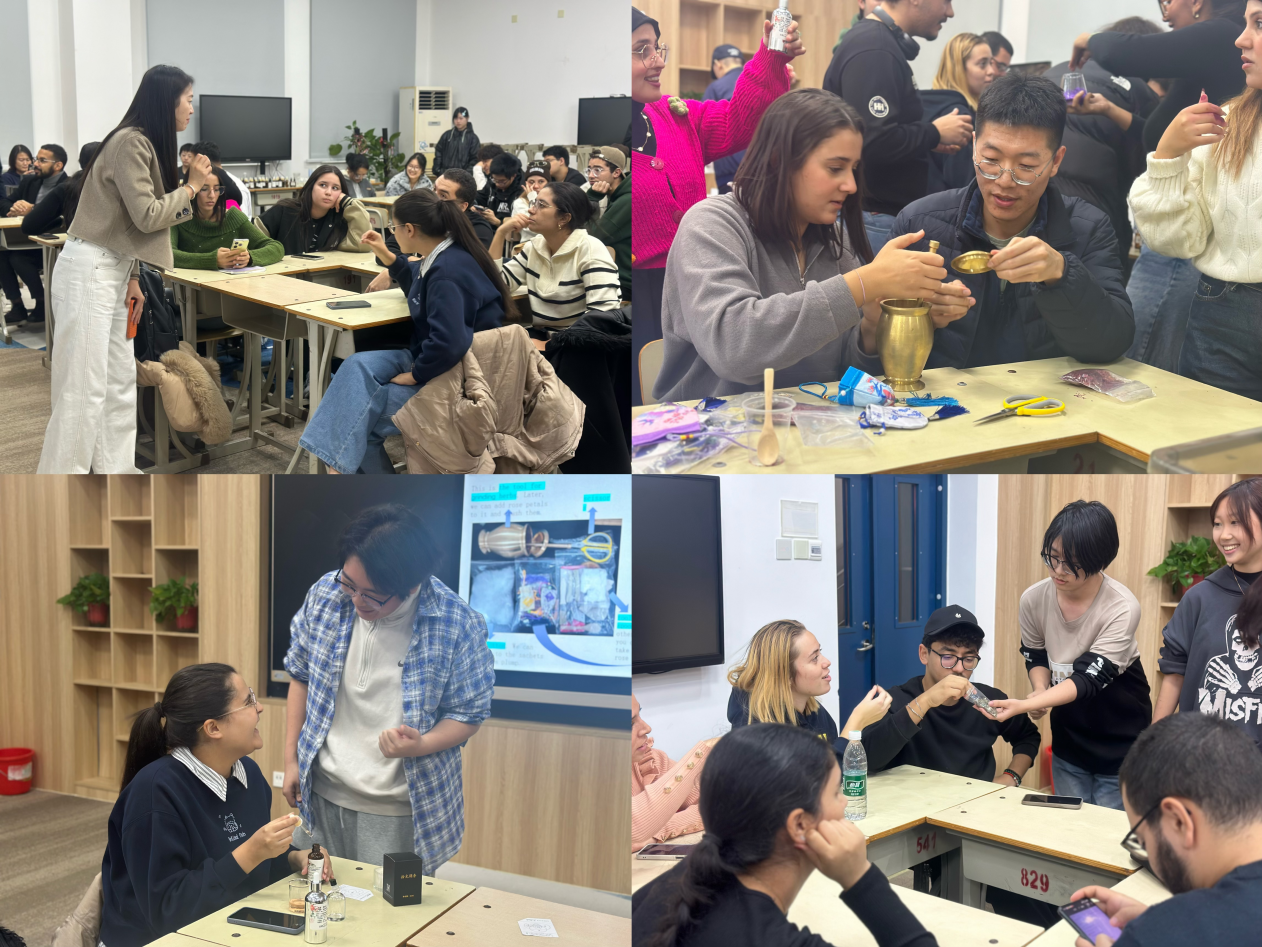On October 24, the School of International Education, together with the School of Biological Engineering and the School of Economics and Management, held a traditional intangible cultural heritage experience activity of TCM (Traditional Chinese Medicine) fragrance with the theme of "Scent to Understand the Middle Way: From Herbal Medicine to Fragrance Narrative, Decoding the Wisdom Code of 'Medicine and Fragrance Sharing the Same Origin'".

With "medicine and fragrance sharing the same origin" as its core theme, this activity aimed to guide international students to deeply understand the philosophical wisdom of TCM—"warding off filth with fragrance and preventing diseases for health preservation"—through cultural explanations, herbal identification and hands-on practice.


Students from the Business English major of the School of Economics and Management and the TCM Sachet Project Team of the School of Biological Engineering explained the Chinese fragrance culture and the historical origin and cultural connotation of "medicine and fragrance sharing the same origin" to international students in both Chinese and English. They talked about the thousand-year inheritance and development of Chinese fragrance culture in a vivid way, covering topics from *Huangdi Neijing* (Inner Canon of the Yellow Emperor) to *Compendium of Materia Medica*, and from ritual fragrance use to literati fragrance affairs.


The "Craftsmanship Condensing Fragrance" practical session set up three creation experience zones for international students. In the "Ancient-Style Medicinal Sachet" zone, students personally blended sachets with functions such as calming the mind, repelling mosquitoes and refreshing the mind according to the medicinal effects they had learned. In the "Guofeng Light Perfume" zone, students learned about the top, middle and base notes of perfume, and used TCM essential oils such as sandalwood, mugwort and osmanthus to blend personalized fragrances with unique oriental charm.


At the final "Fragrance Narrative and Memory" sharing session, international students displayed their works one after another and shared their creative inspirations and cultural insights. Eya, a student from Tunisia, said, "I added mint and mugwort to my sachet. It not only has a fresh scent but also can refresh the mind and repel mosquitoes. During this process, I truly understood how 'medicine' and 'fragrance' are integrated in Chinese culture."

This activity not only built an international exchange platform integrating TCM culture with modern cultural and creative practice, but also enabled international students to deepen their understanding and recognition of China's excellent traditional culture through a "smellable, touchable and creatable" approach during the hands-on process. It has become a vivid practice for our university to promote the integration of cultural communication and vocational education.
 Dynamics
Dynamics



 Location:
Location: